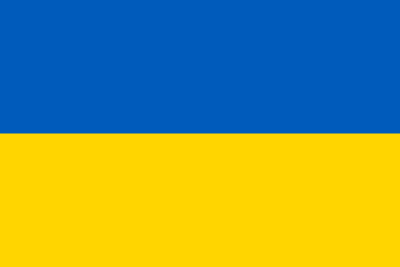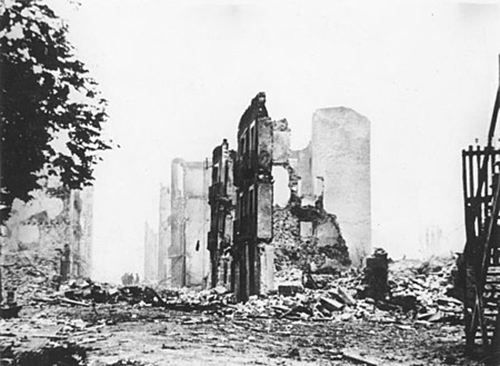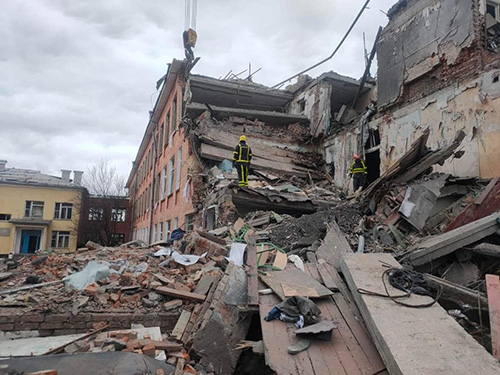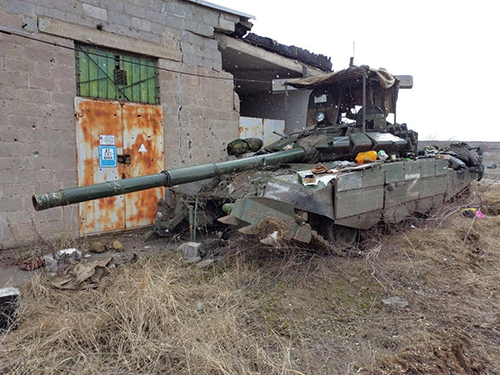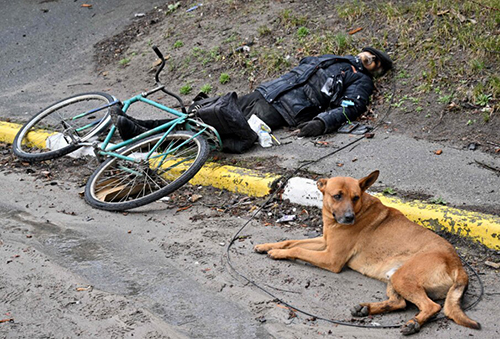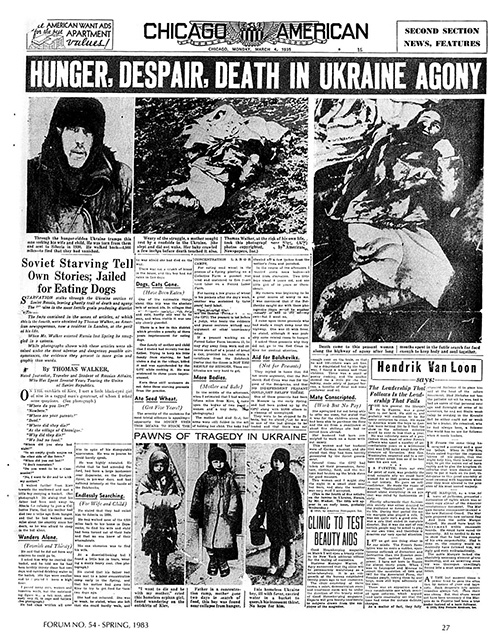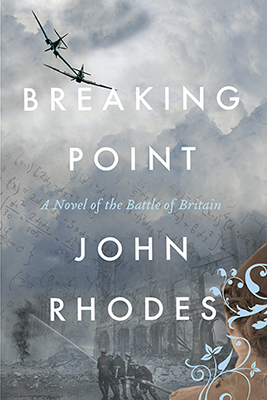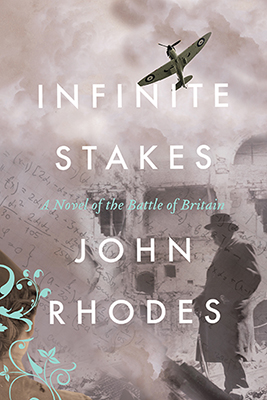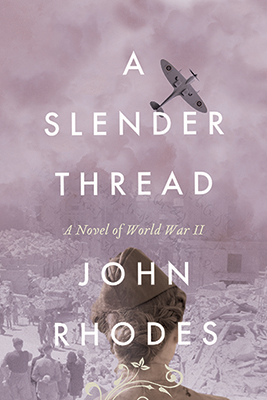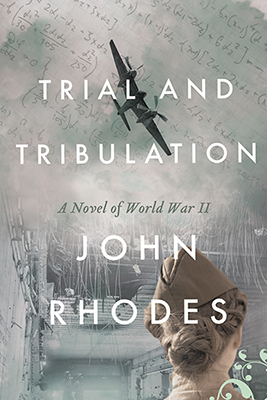I’ll write about the war from a historian’s perspective, about pivot points, parallels, red lines, and other such things.
A Pivot Point
We are living at a pivotal moment in European history, and perhaps world history. We don’t know how this war will turn out, but we can be confident that the result—whatever it will be—will shape history for decades to come.
Russia is an expansionist autocracy. All such regimes throughout recorded history have continued to expand until they were stopped. Although it is too soon to judge President Putin, he does seem to share two characteristics with other autocrats: he needs an external enemy or overwhelming threat to justify his domestic repression and he seems to have a sort of Napoleonic belief in himself as ‘a great man of destiny.’ He often speaks of rescuing the Ukrainian people from their own ‘Nazi’ government and defending Russia from NATO aggression, and he speaks of recreating a Russian ‘near abroad’ by reversing the tragedy (to him) of the Soviet collapse.
Putin has been able to suppress domestic opposition for twenty years and has conducted successful military campaigns in Chechnya, Georgia, Syria, and Ukraine. His modus operandi domestically and abroad is threatened or actual violence. He will continue unless he is stopped.
There are three prominent expansionist autocracies in the world today: Russia, Iran and China. In addition to Putin’s adventurism we have China’s military expansion throughout the South China Sea and Iran’s numerous proxy wars. None of these regimes has been stopped and there is no historical reason to believe they will stop of their own accord. None of these regimes has been told there is an enforceable ‘red line’ at which they must stop. If Putin is successful in Ukraine all three regimes will continue their aggressive policies.
Therefore the results of the current conflict in Ukraine will have a decisive impact on events in the Middle East and South East Asia. Either Putin will be stopped or he will move on to his next target and China and Iran will move on to theirs.
A Parallel
It’s a good rule of thumb when writing about contemporary affairs that one should never draw comparisons to Nazi Germany. So let me break that rule!
Throughout the 1930s Hitler first threatened and then invaded his neighbors, one by one. There were no pushbacks. He also conducted a practice war in Spain to perfect the next generation of military aircraft technologies and tactics. There were no pushbacks.
Remilitarize the Rhineland?—got away with it! Carpet bomb Guernica?—got away with it! Take Austria, take Czechoslovakia?—got away with it! They say there’s a red line against attacking Poland?—I don’t believe they’ll try to stop me…
Hitler practiced on Guernica
Putin prefers Chernigiv
Just like Putin today, Hitler did not believe he would be stopped or even seriously threatened in 1939, when he went for Poland. And just like the 1930s, when there were three aggressive, expansionist powers—Germany, Italy and Japan—gobbling up their neighbors, we have three actively expansionist powers today…
A Potemkin Army
One of the great shocks of this conflict has been the apparent failures and inadequacies of the Russian army and its equipment. I assumed—everyone assumed—that the forces Putin amassed on his borders and in Belarus would overwhelm the Ukrainians in very short order. But, so far at least, the vaunted Red Army we see on parade in Red Square in Moscow seems to be a hollow shell.
History is ripe with ironies and here is one:
The Tsarina Catherine II (Catherine the Great) invaded and conquered Ukraine in the late eighteenth century and sent her official lover, Grigory Potemkin, to govern it. He boasted of Ukraine’s wealth and glory under his rule and she decided to visit to see for herself, floating down the Dnieper River in a splendid royal barge. Alas to Potemkin, Ukraine was very poor and backward, as she would see.
What to do? Potemkin had a fine village constructed consisting of moveable homes and structures. He erected it on the banks of the river as she floated past, and then had it moved secretly ahead of her, so that she that she would see it again and again and be impressed that Ukraine was such a bustling hive of industry. (Hence the term ‘Potemkin village’ for things pretending to be far more than they really are.)
Now in Ukraine we see that the Russian army, so splendid on parade in Moscow, appears to be losing ground against a much smaller opponent—Russia seems to have a Potemkin army.
There are many analyses available from experts who can describe how—and more importantly why—the Russian military appears to be struggling, so I won’t add my speculation to theirs.[1] But I will offer a couple of suggestions from history:
• Defenders usually have far more to lose than attackers and fight more fiercely, and they have home court advantage, as in the Battle of Britain in 1940.
• Conscript armies are made up of mostly semi-literate teenage boys taken from home against their will, given a few months of rudimentary training and a lethal weapon and told: ‘go get ‘em!’ Why are people surprised when civilians are robbed, raped, or killed.
• Similarly, tanks are very difficult to drive and operate, and the driver has very limited vision. Why are we surprised when so many, driven by teenagers, wind up in a ditch?
Part of Putin’s Potemkin army
The Holomodor
Many people in the west still seem to believe that Ukraine is ‘part of historical Russia’ and that Ukrainians should be content to live within the orbit of Russian economic and military influence. Similarly many people (the pope, as a surprising example) seem to think that Putin’s actions are reasonable because he was ‘threatened’ by NATO expansion—the “barking of NATO at Russia’s door” as the pope said, as quoted in the Italian Corriere della Sera newspaper.
One wonders if this dog agrees with the pope that the problem is caused by NATO’s barking
Those people, it seems to me, either don’t know history or chose to misinterpret it. In the 1930s, just about within living memory, Stalin forcibly nationalized agriculture in Russia and forced all farming into ‘collectives.’ The result was famine. To offset the disaster he had caused Stalin took away all the food in Ukraine: just put it all on wagons and took it to Russia. An unknown number of Ukrainians, somewhere between 3 million and 6 million, starved to death, in a catastrophe known as the Holomodor, a disaster on the scale of the Holocaust.
I’ll write on all of this again as the conflict evolves. In the meantime, God save the people of Ukraine.
[1] I recommend the Royal United Services Institute (RUSI) as a well-informed unbiased source.



